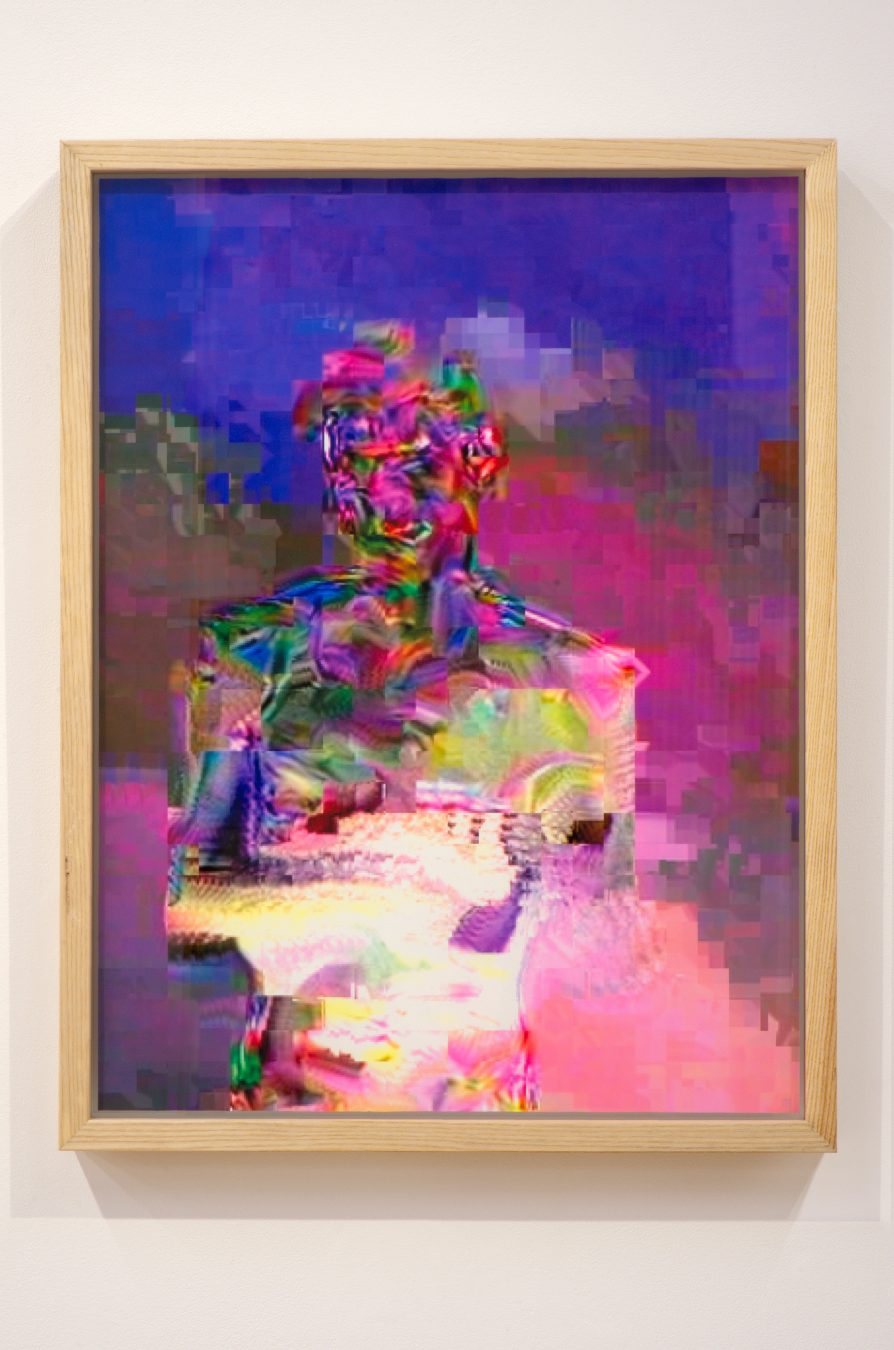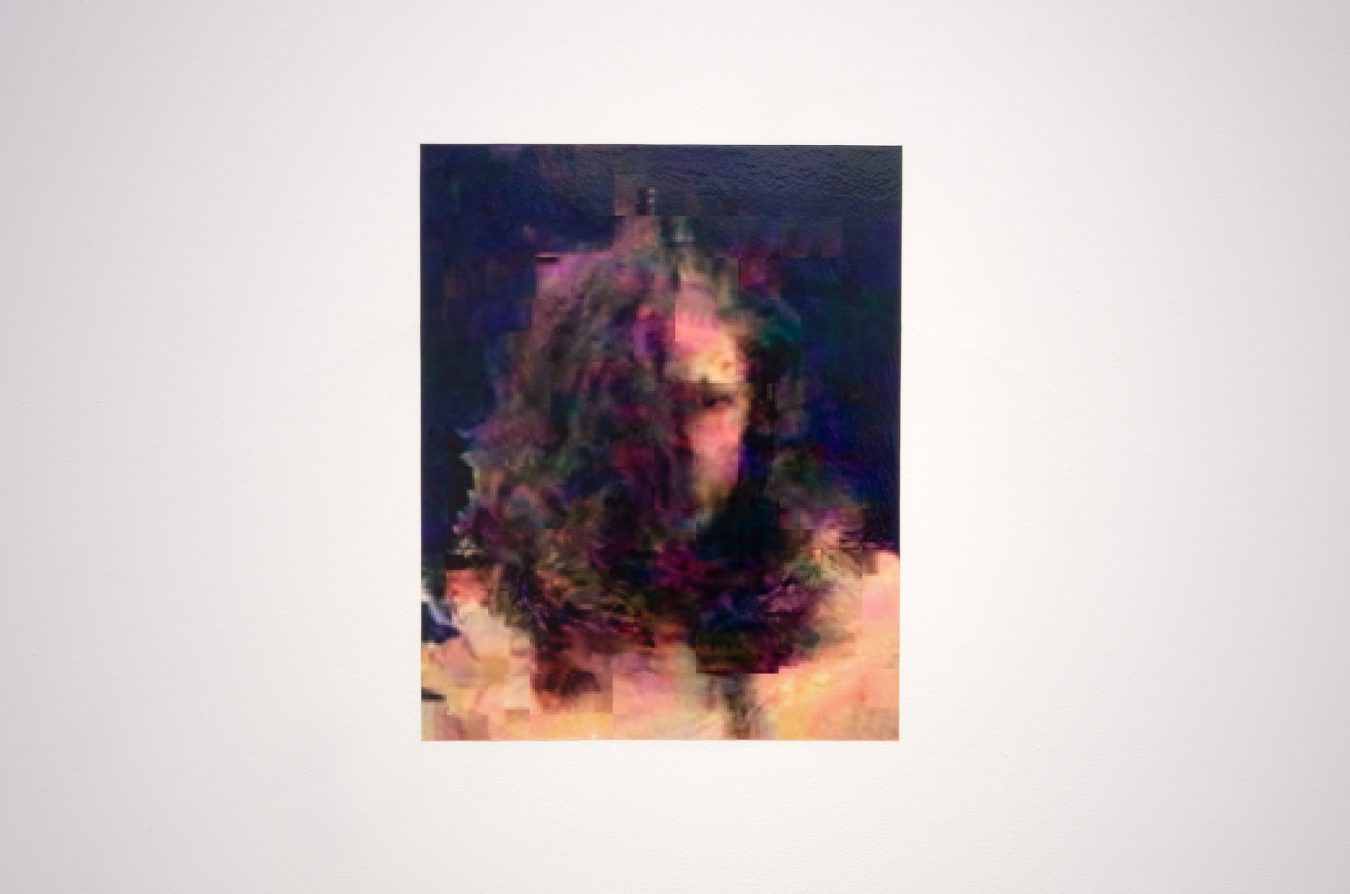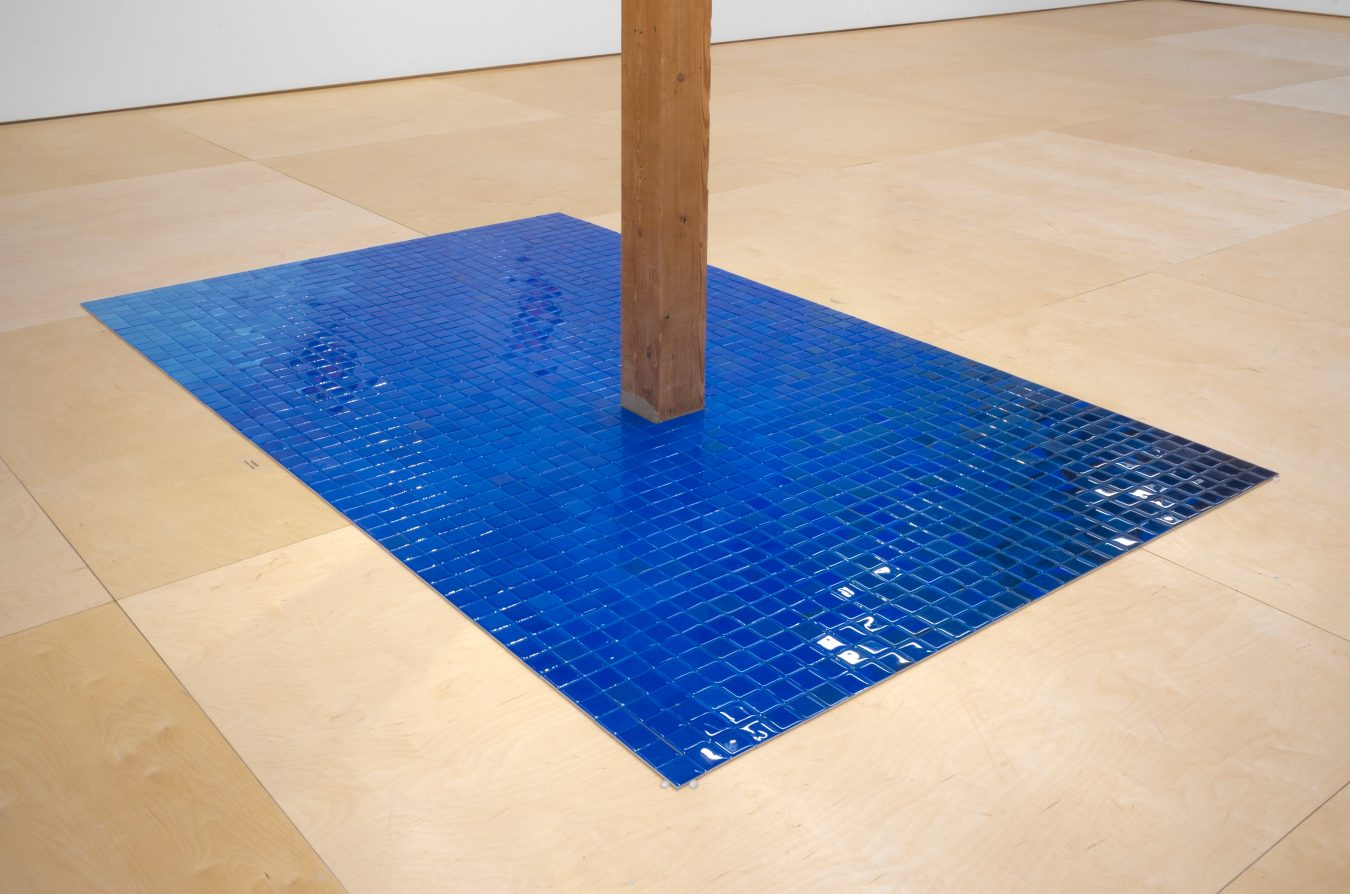Our bodies are already online. Most of our faces and fingerprints already exist as data in numerous versions of the cloud, and if Mark Zuckerberg’s Congressional hearings have taught us anything, it’s that no one really knows how far we have travelled online. Vancouver artist Ed Spence, who has previously been largely interested in analogue concepts of data and the body, examines the concept of the digital self in his new exhibition, “Pool,” at Franc Gallery until May 5, 2018.
Spence’s body of work is mostly comprised of his abstract collages, created by meticulously cutting out re-photographed images and arranging the small paper tiles into gradients. The pieces usually eliminated their sources, which have ranged from magazine imagery to the artist’s own photography, while retaining recognizable elements of the original subjects. But recently, Spence began to approach the structure differently. “There are a lot of interesting things happening with just the simple minimal system that I had developed previously,” he explains. “That just became too controlled and too predictable for me, and something that was supposed to be meditative to take you out of the body actually brought me into the body. I’d get sore from grabbing something the same way and pushing it onto the surface the same way. Logistically, it became a problem for me.”
So for his latest exhibition, Spence expanded his process while diversifying his material and conceptual basis. “There’s a through-line with my last show at Franc called ‘Soft Error’ and the series of photographs that had be cut and rearranged into different gradients,” says Spence, who has previously exhibited at Vancouver’s Burrard Arts Foundation and Qlick Editions in Amsterdam. “So that method of working has brought me through to this show here, expect instead of making small wall pieces it’s kind of transformed.” His multi-media show includes industrial materials such as wall-mounted acrylic and ceramic tiles with vibrant, glossy finishes that reflect light and movement.
Much of Spence’s new work is derived from videos of him and his frequent collaborator and wife, performance artist Julie Chapple; the clips are manipulated through a process known as data-moshing. “Data-moshing is essentially when the video interpolates incorrectly, so it kind of goes into ink and water—[the forms] kind of organically grow,” Spence says. Through the video source material, he is able to manipulate the imagery, picking up on colours and abstractions. His wall-mounted pieces made this way are hyper-coloured, with the low-resolution aspects appearing as blurry ghosts of pixels. The subjects are ephemeral—Spence and Chapple are present, but their digitization leaves an eerie imprint. “In a way it’s self-portraiture,” says Spence, “but it’s gone beyond that, where it’s become kind of fantastic and quite varied in ways.”
Spence’s interest in the figure, and more specifically in abstracting the figure, enters into phenomenological interventions in “Pool.” A piece made of blue ceramic tiles and coated in ultra-shiny epoxy resin lines the gallery floor and creates a reflective, water-like surface. The work, its origins from video footage created by the artist as well, connects Spence’s interest in abstracted portraiture to the corporeal experience. “I also wanted to do something more sculptural, and tile has a dialogue with minimalism and with the body,” he says. “There’s this idea of the dancing body turning into a kind of water feature where you could enter into it as a viewer.”
Spence’s new works are an invigorating development in his practise. Moving away from his meticulous, process-driven method, he has found solid ground in the conceptual elements that his previous work only flirted with. Through uploading, manipulating, and almost obliterating his self-reflexive subjects, Spence approaches contemporary concerns of transhumanism with neither celebration nor condemnation. Spence and Chapple’s bodies are somewhere in the cloud, but they remain autonomous and exist in whatever media they want.
Read more from the Arts.














